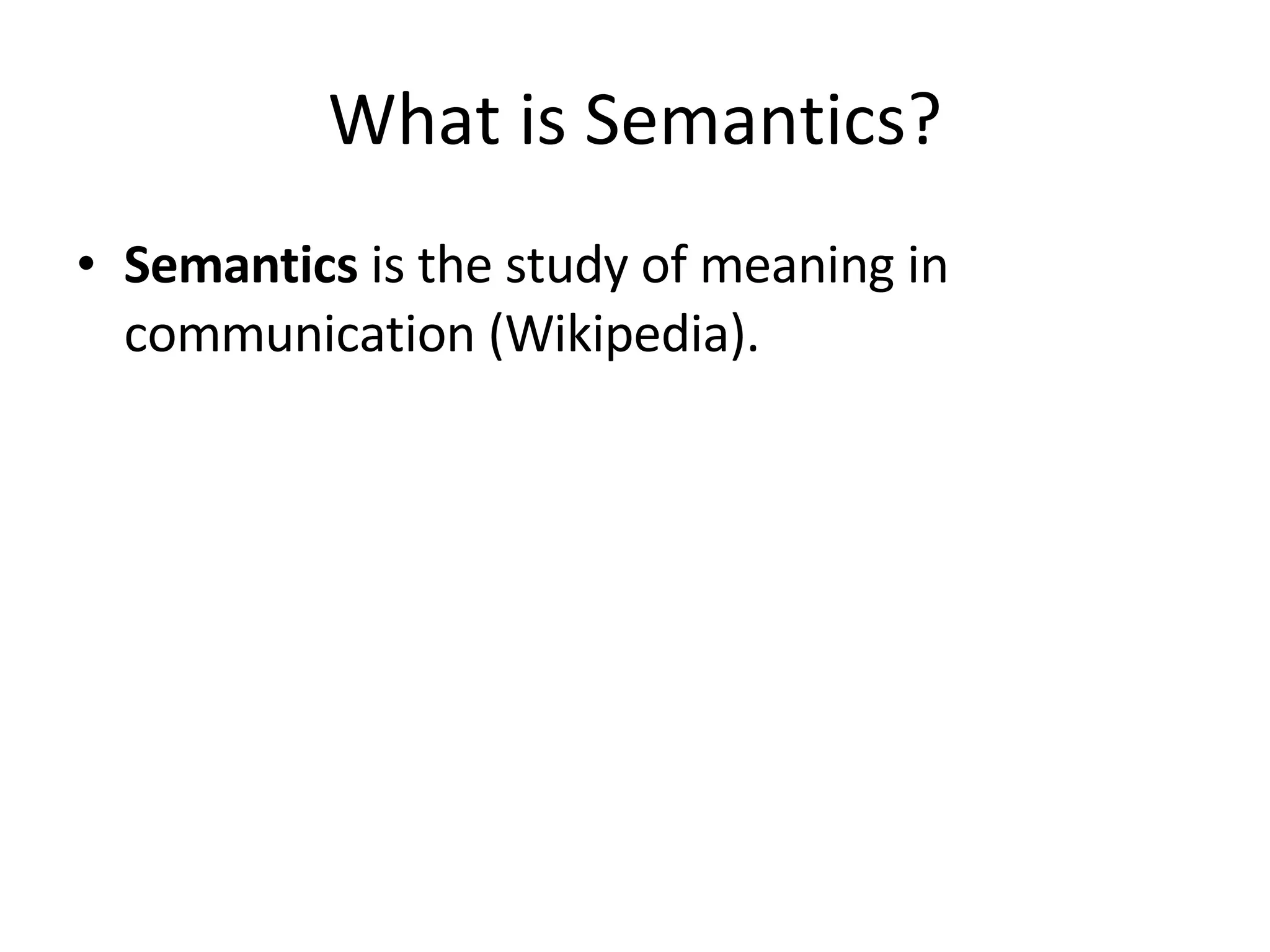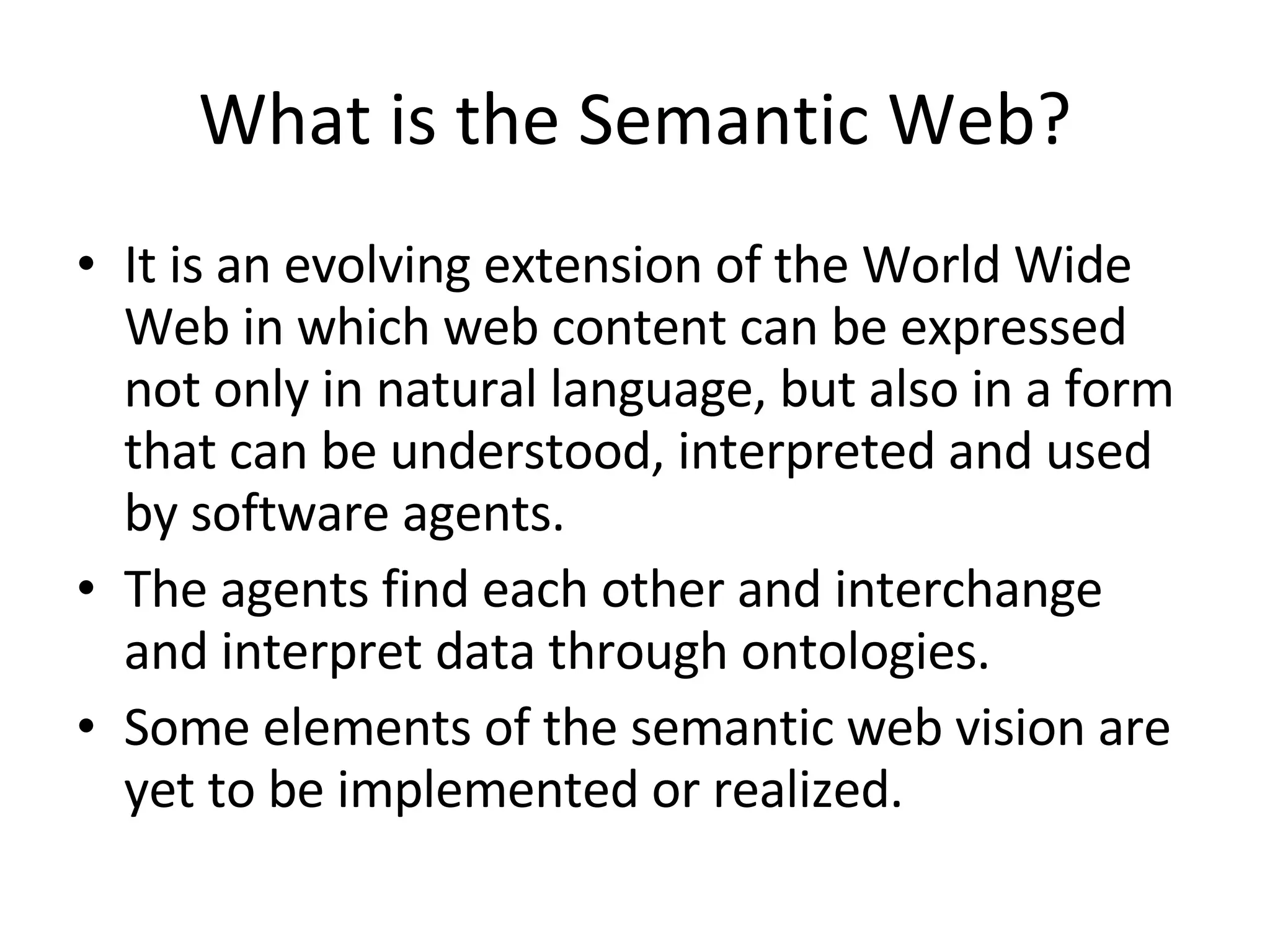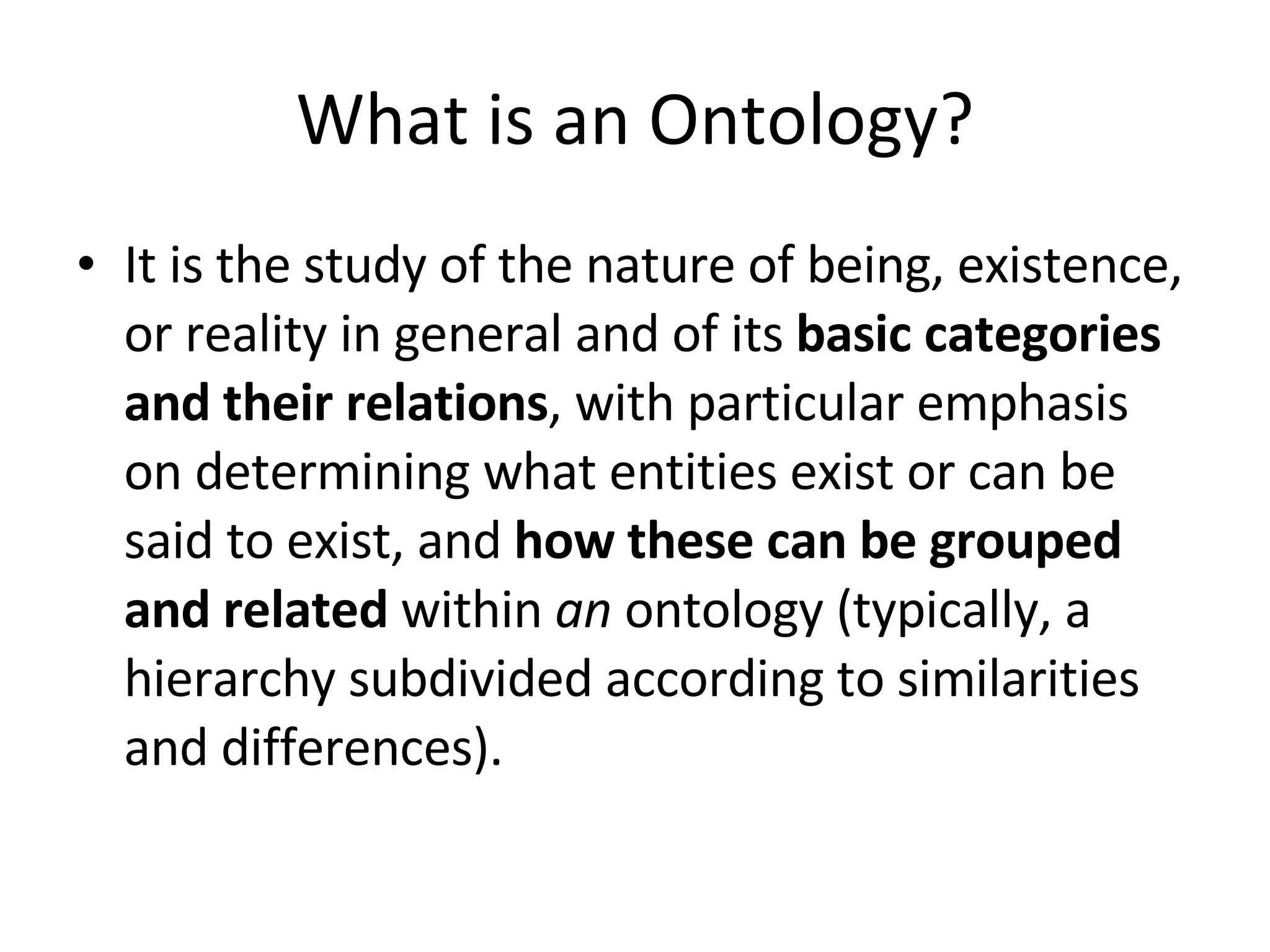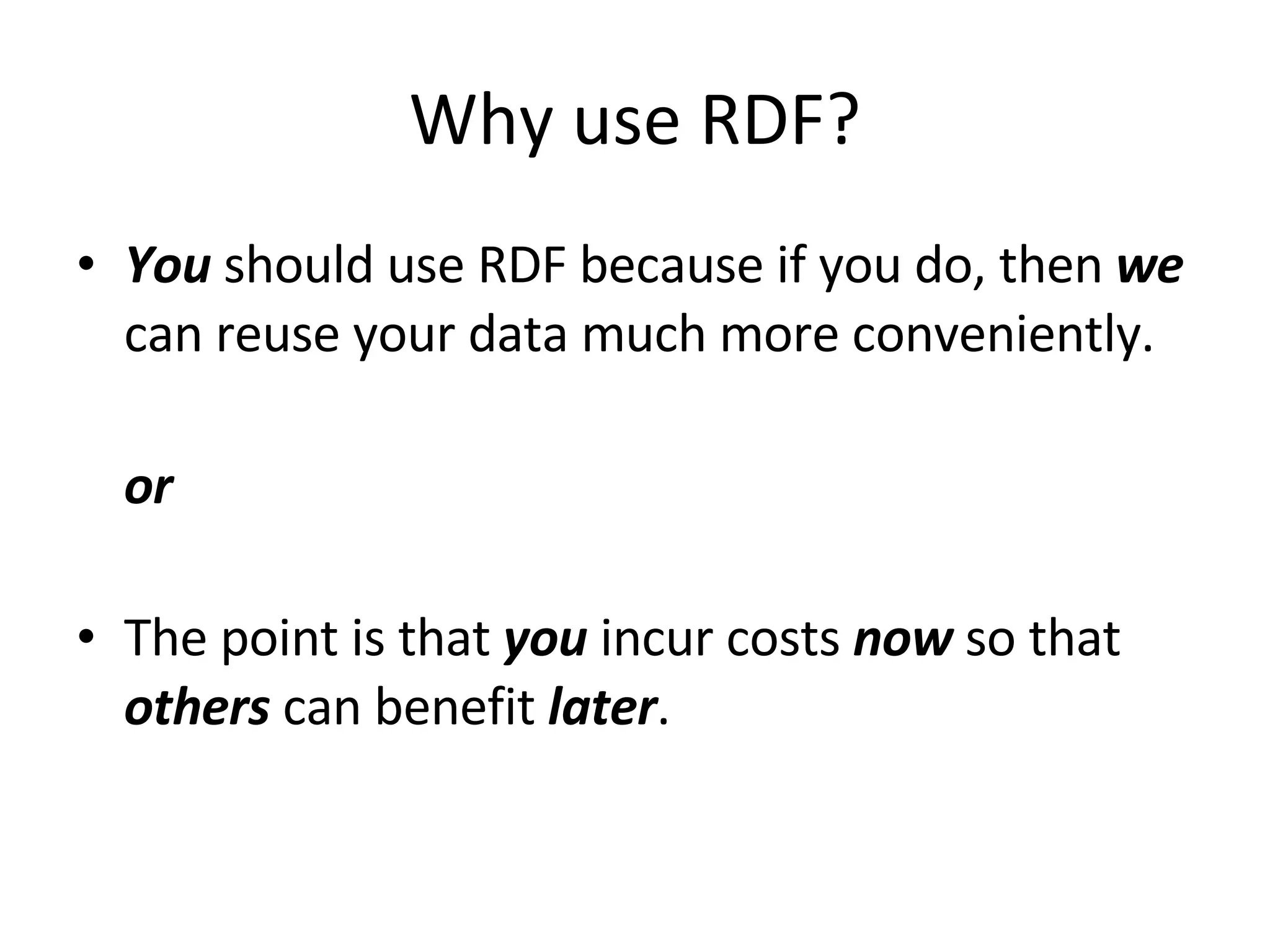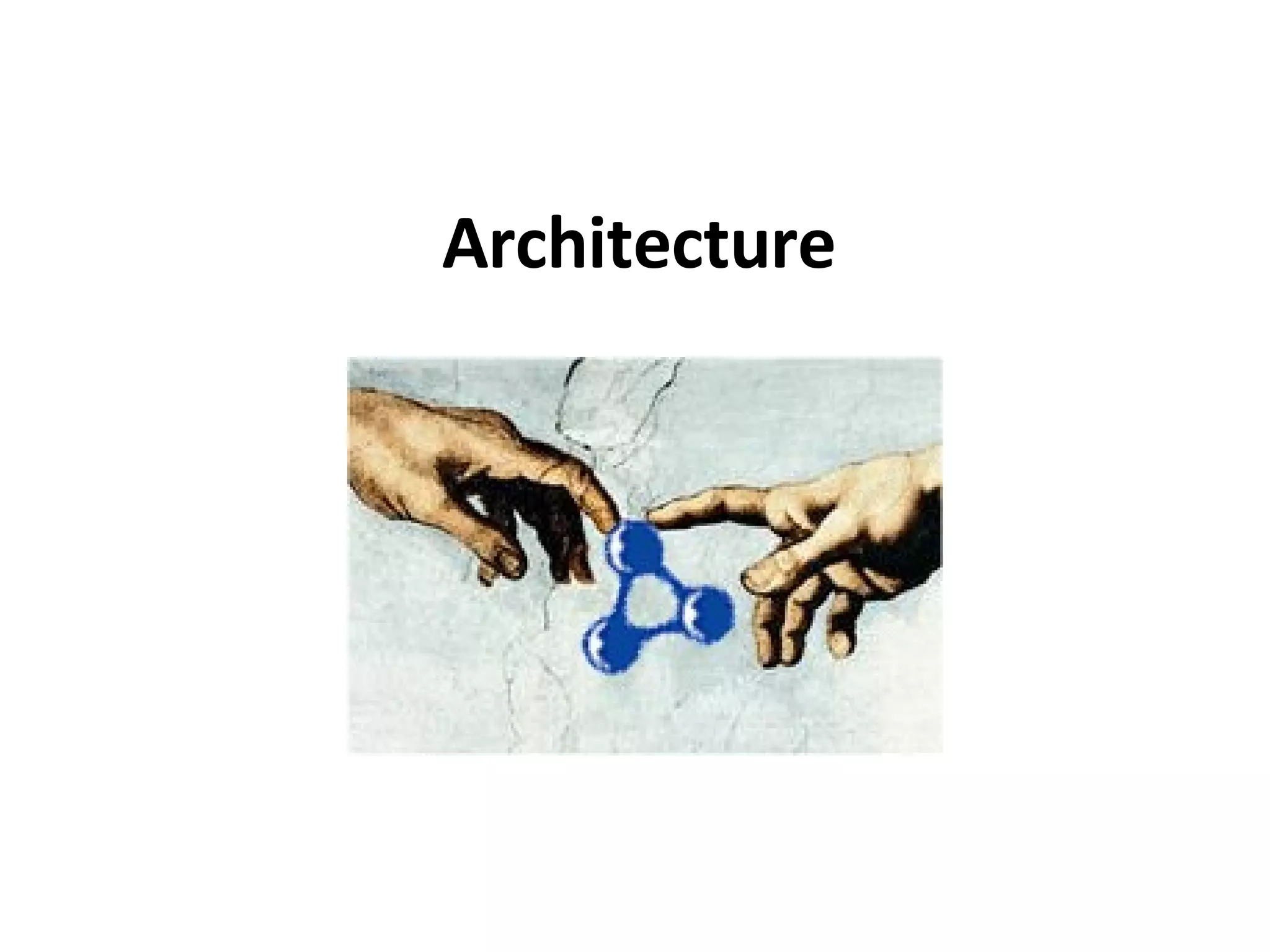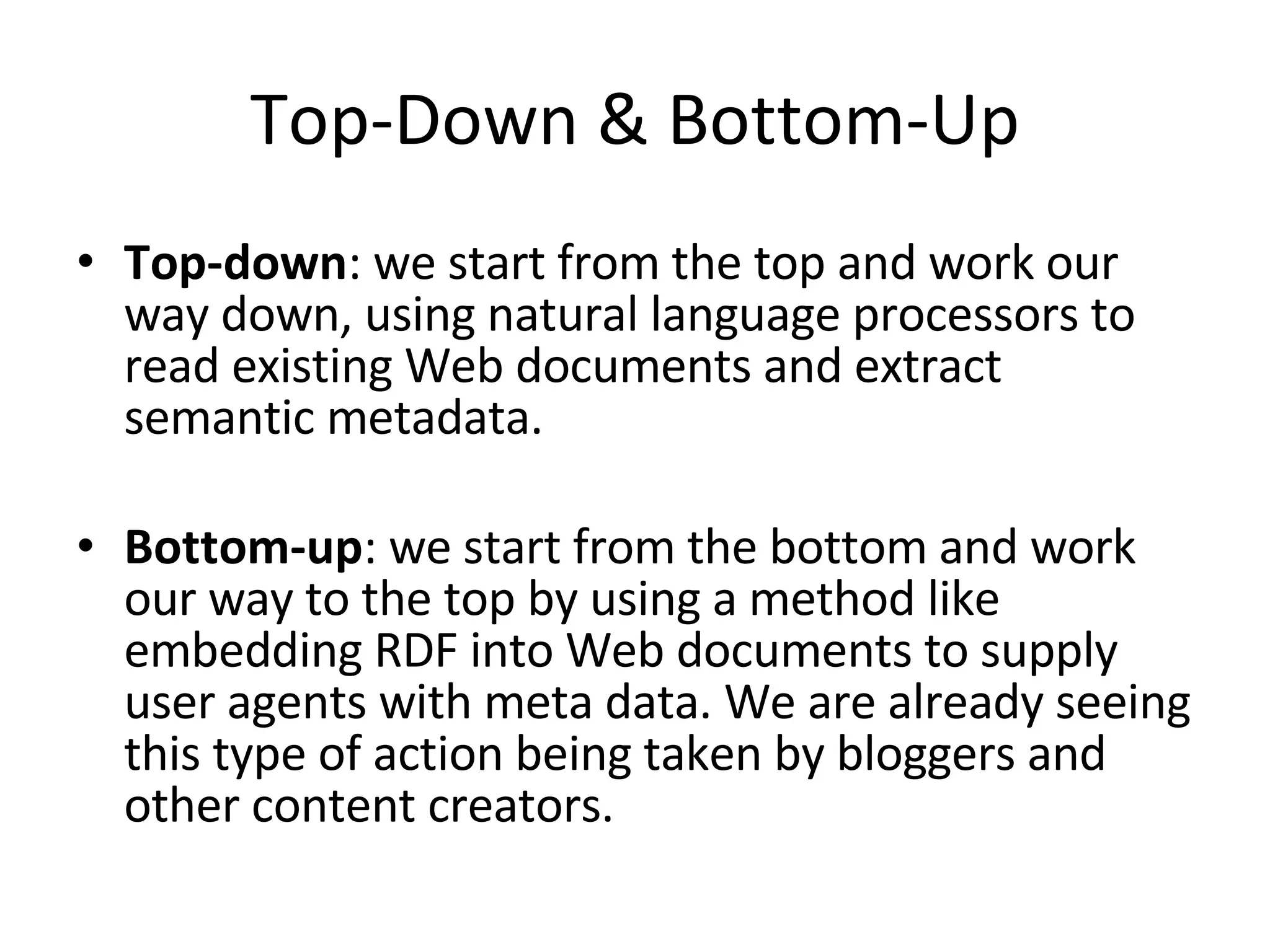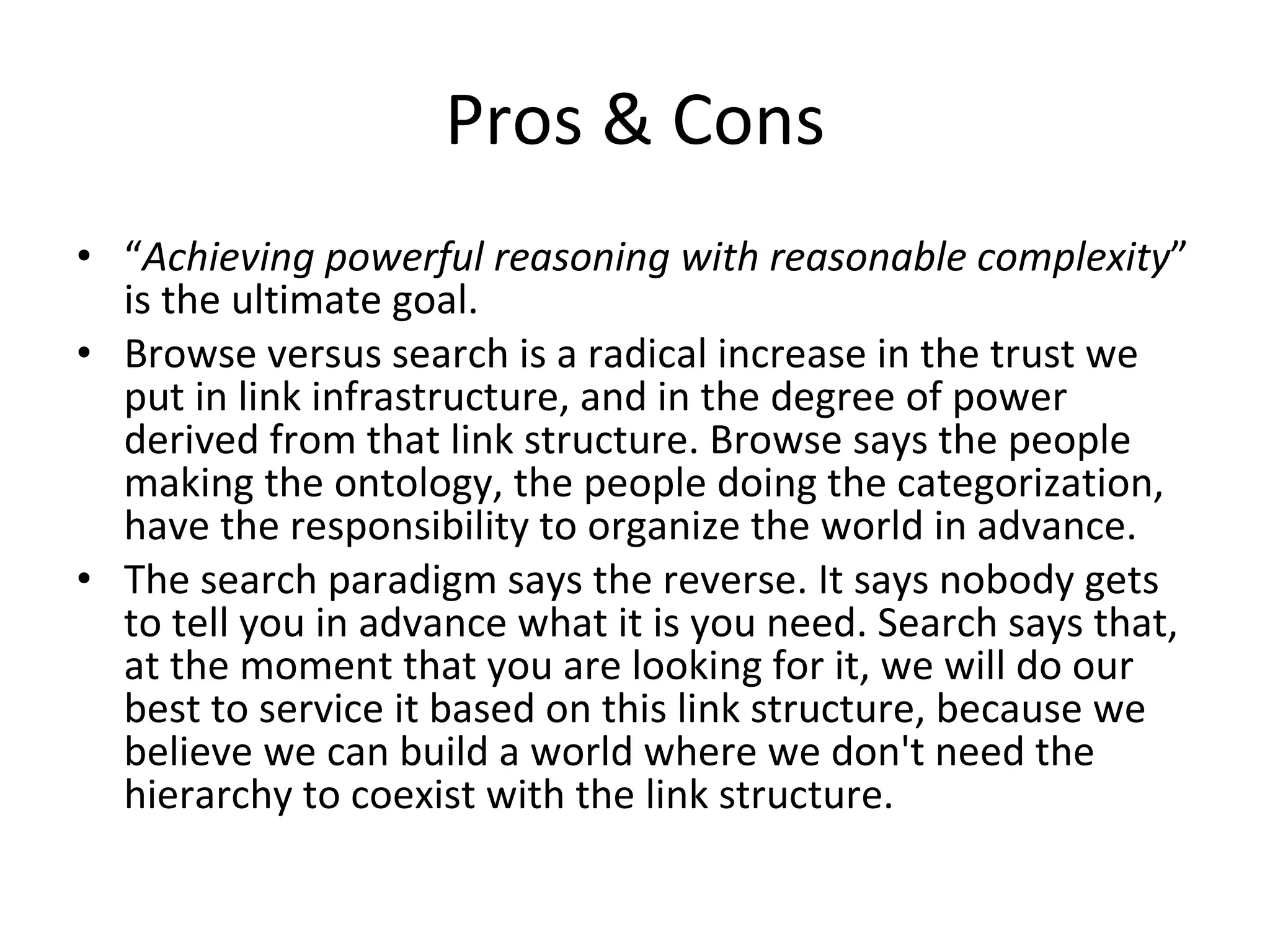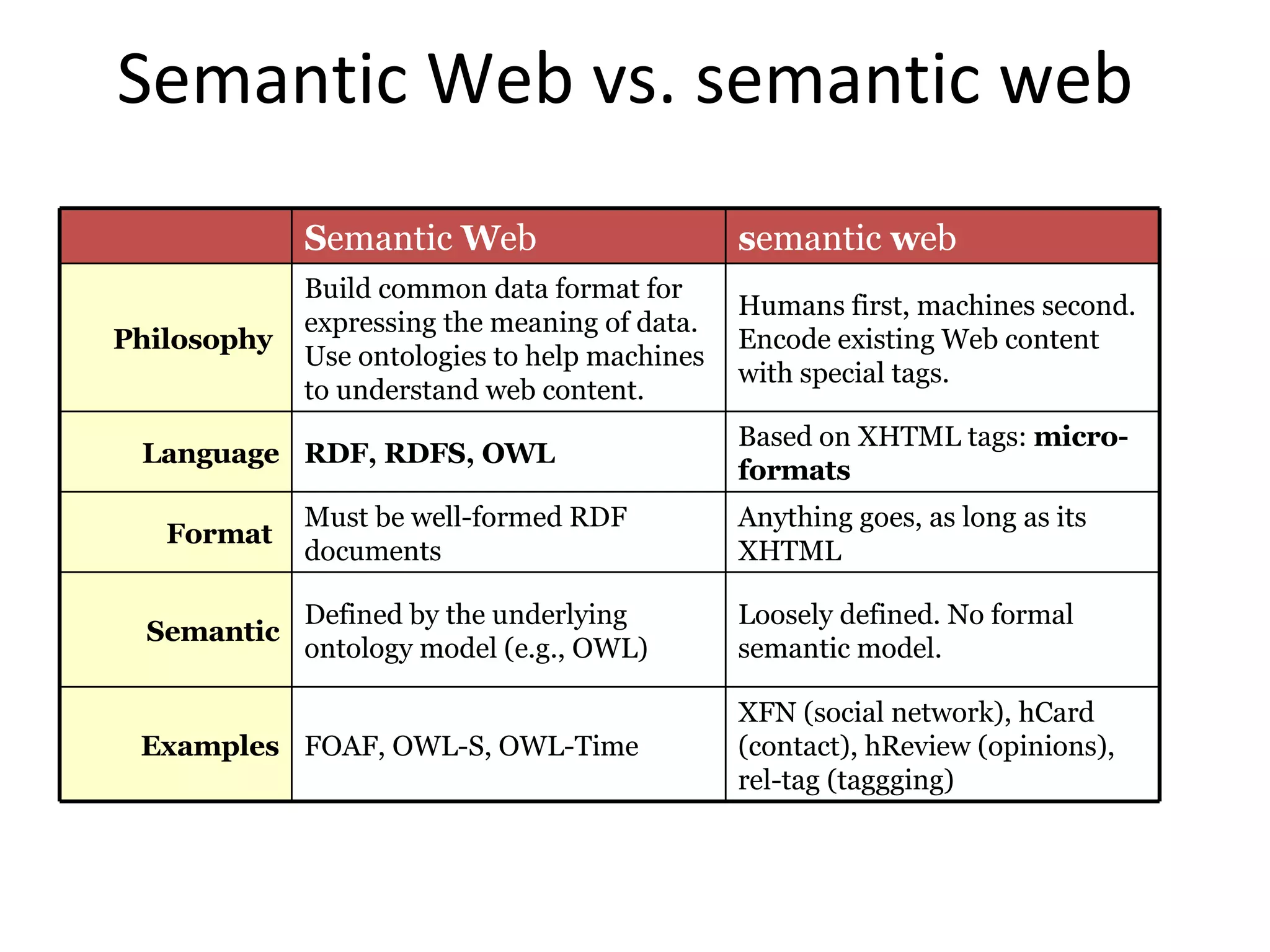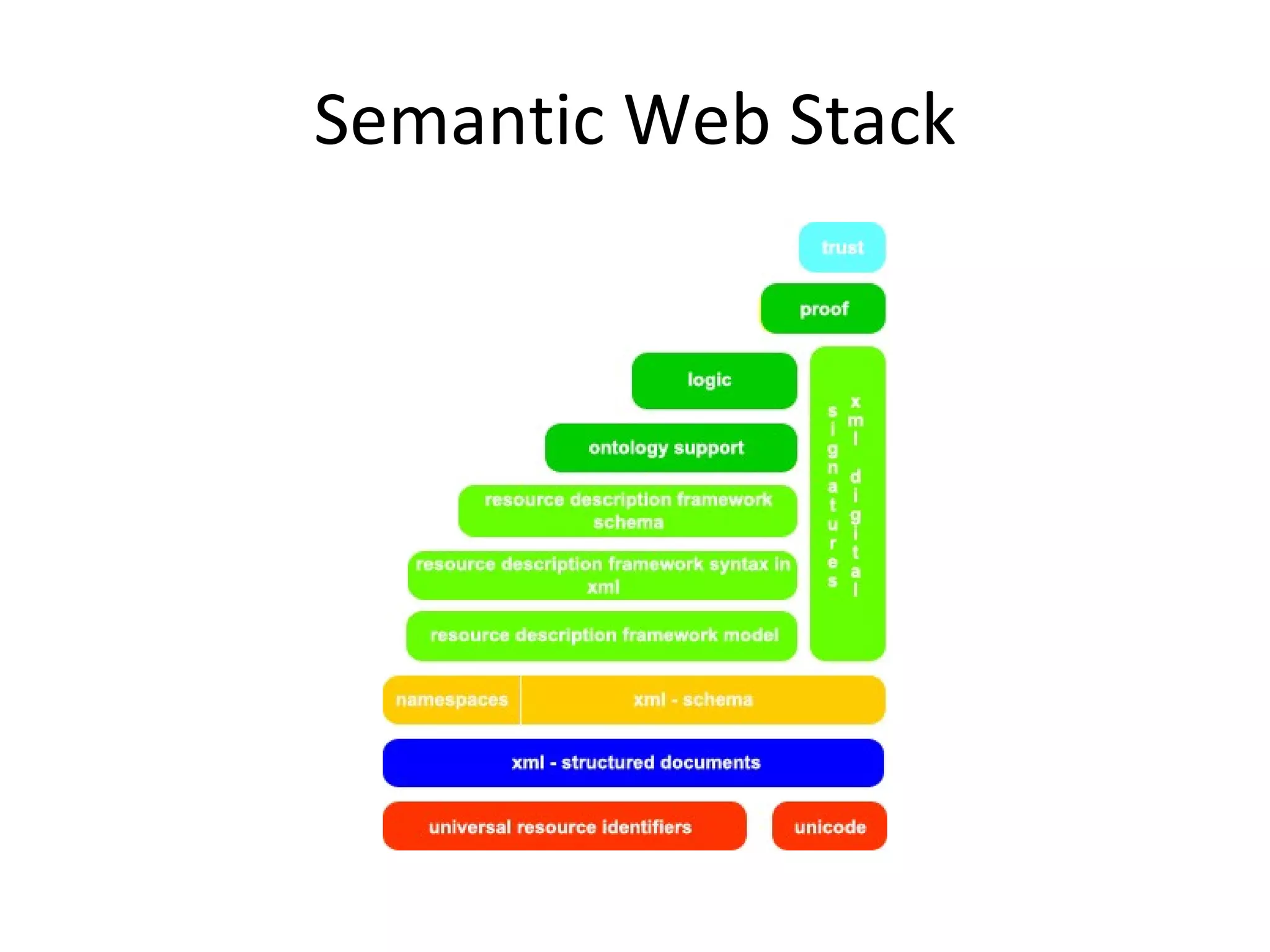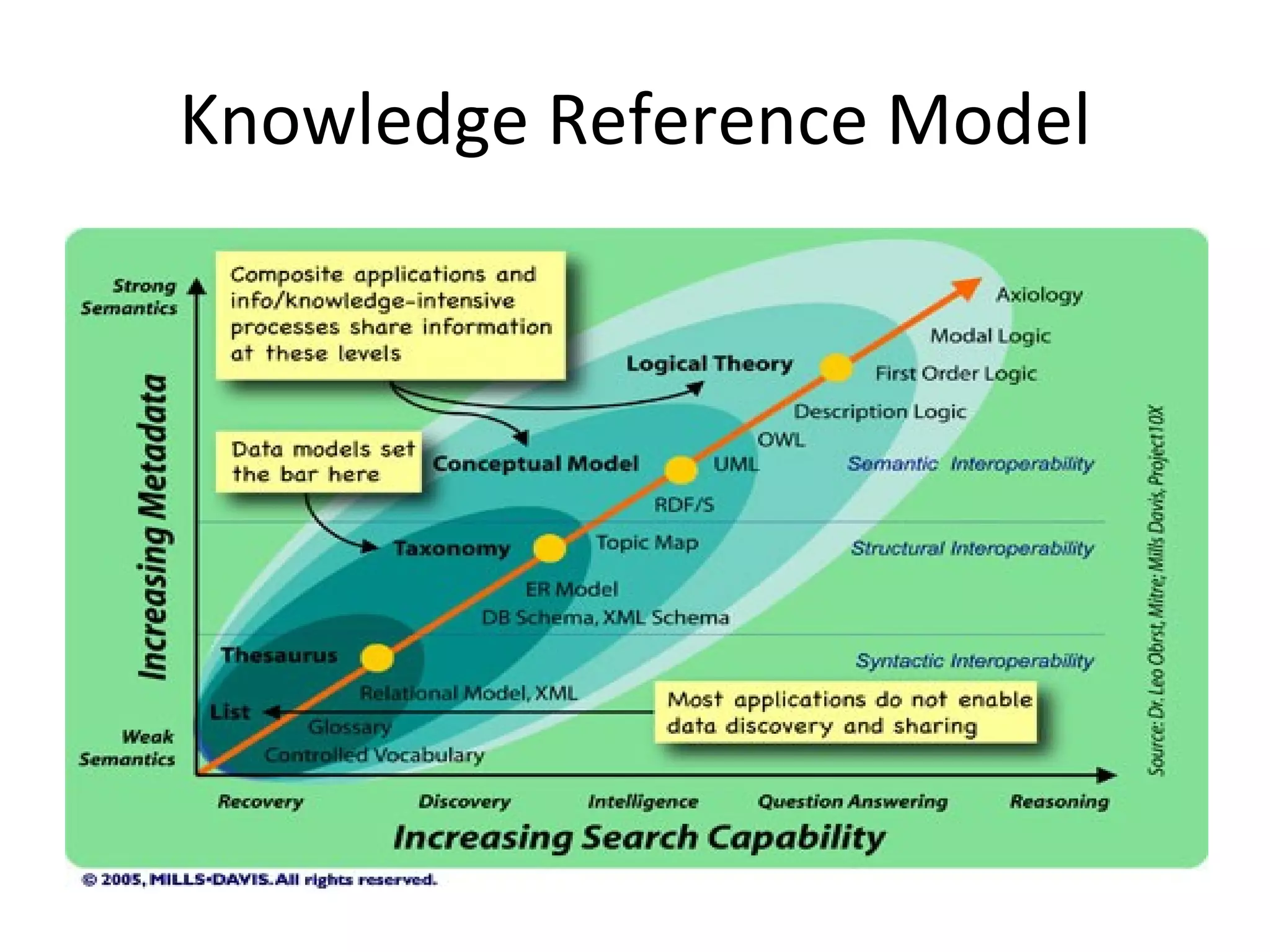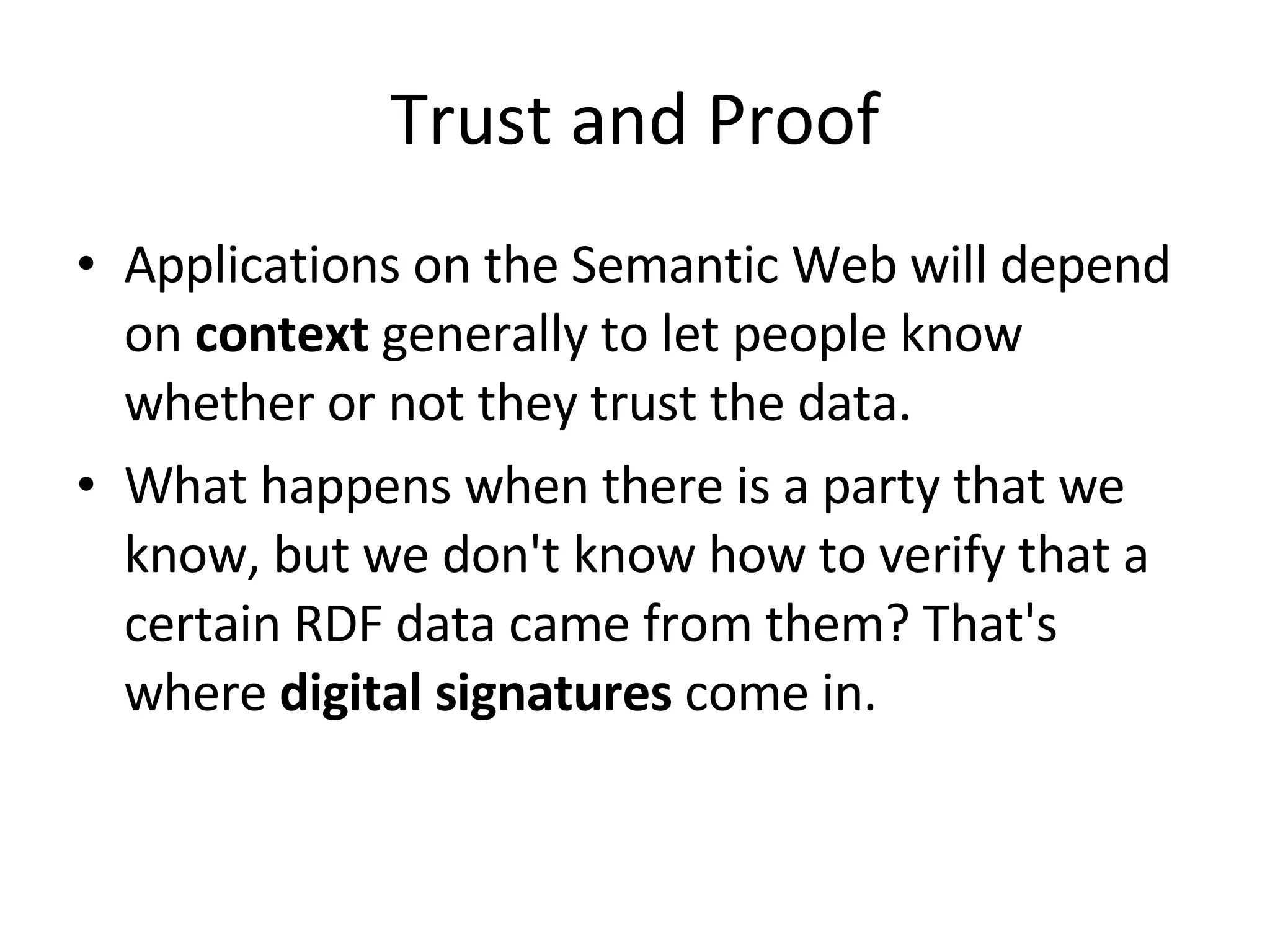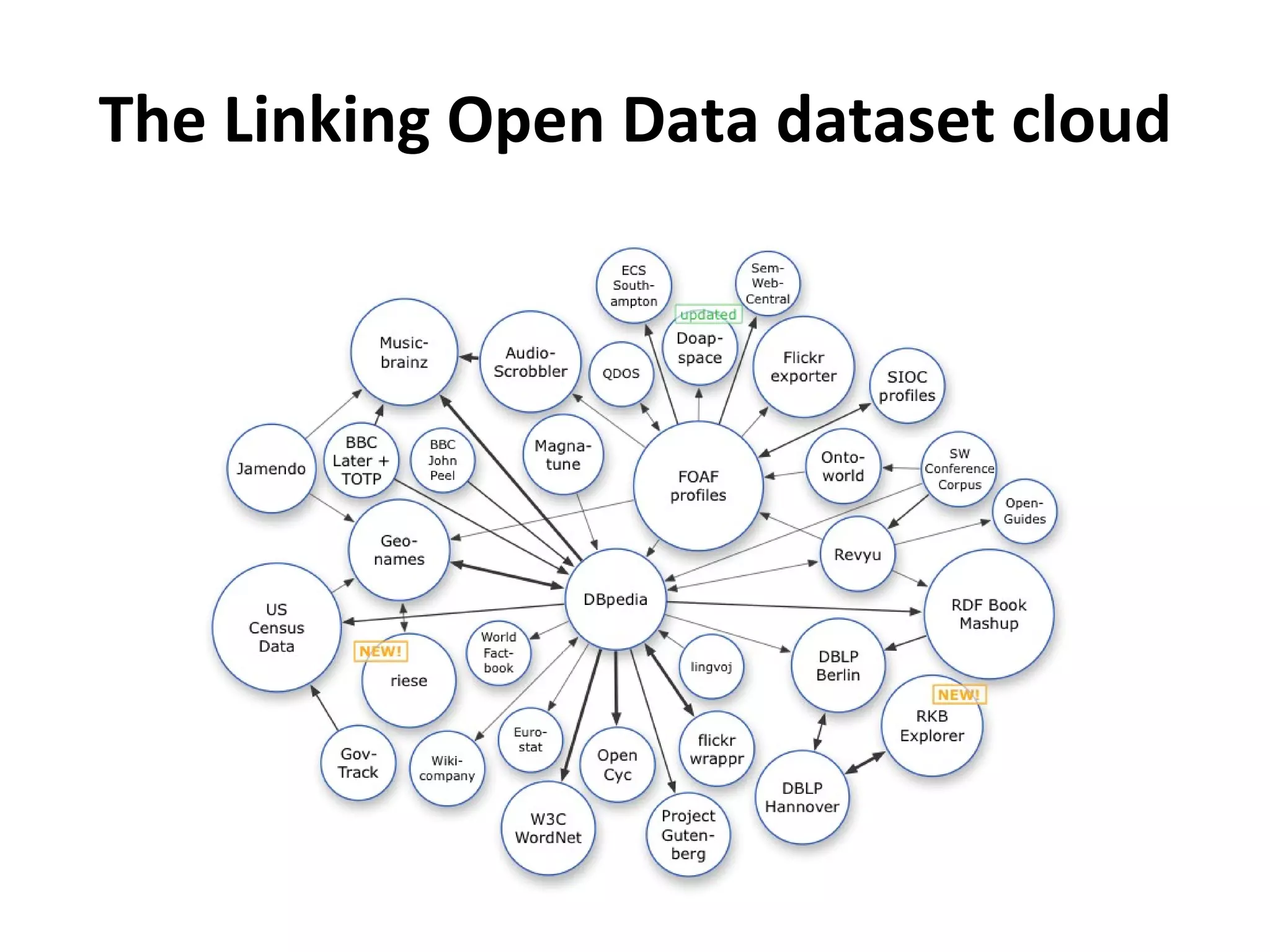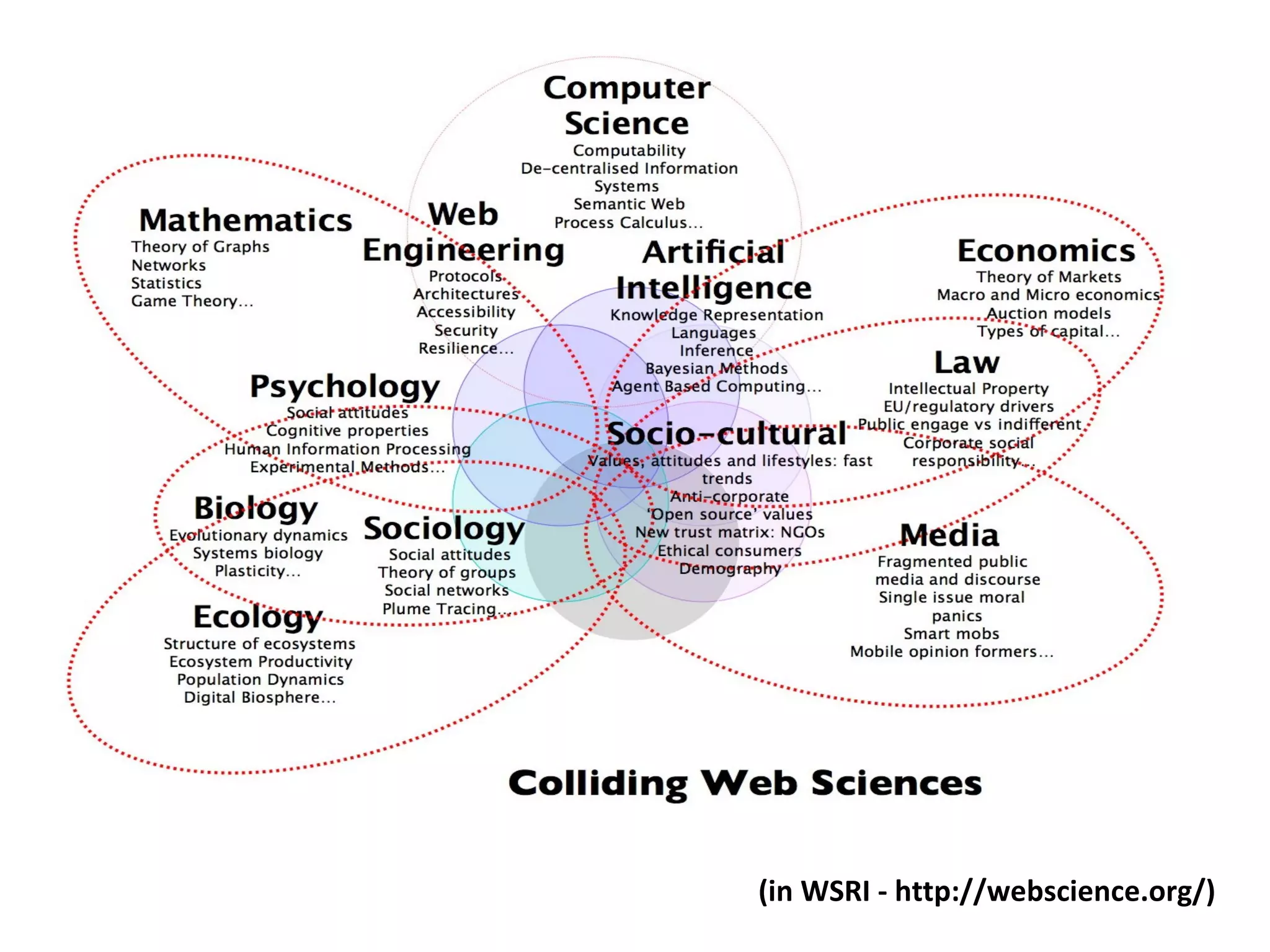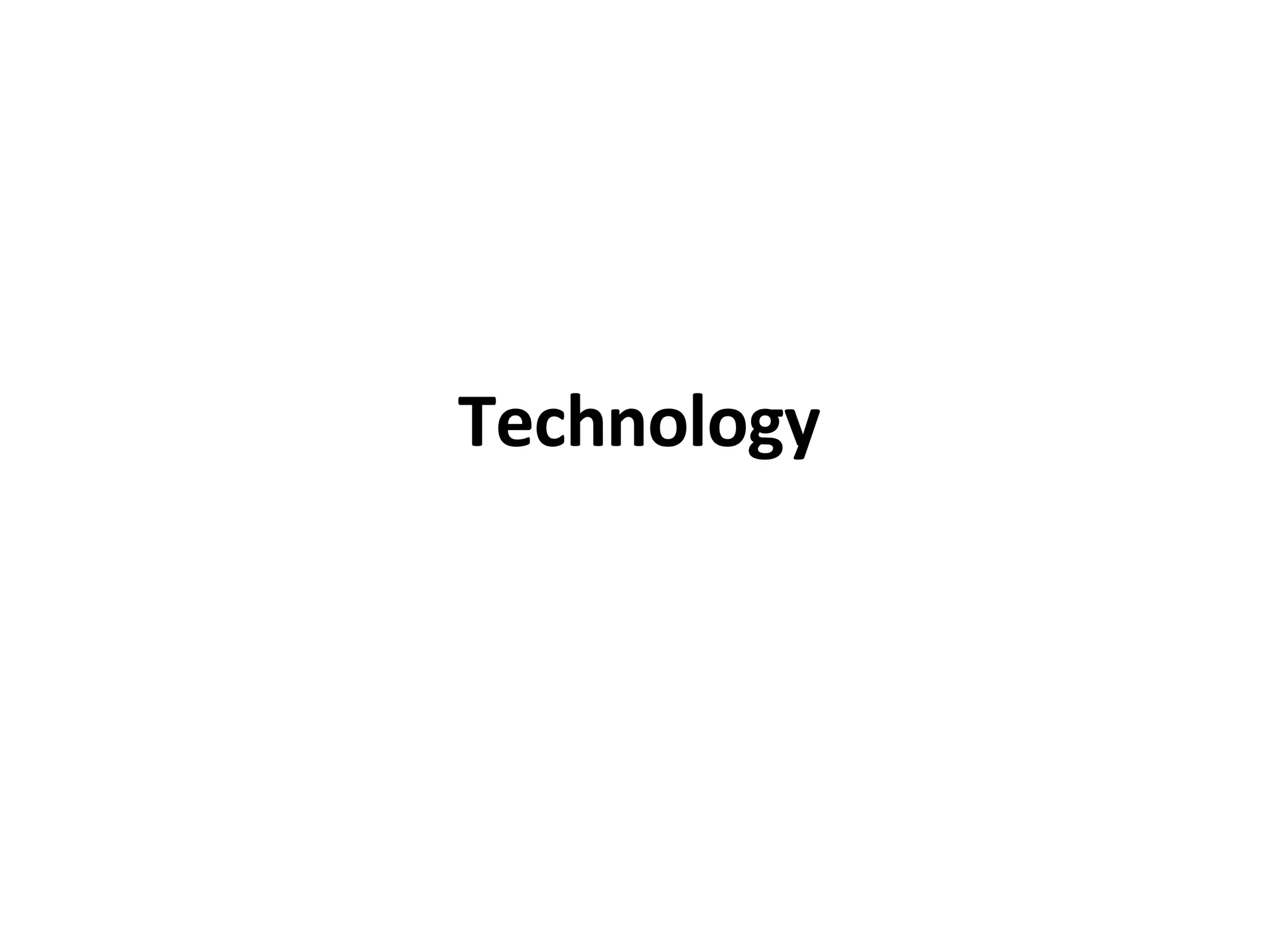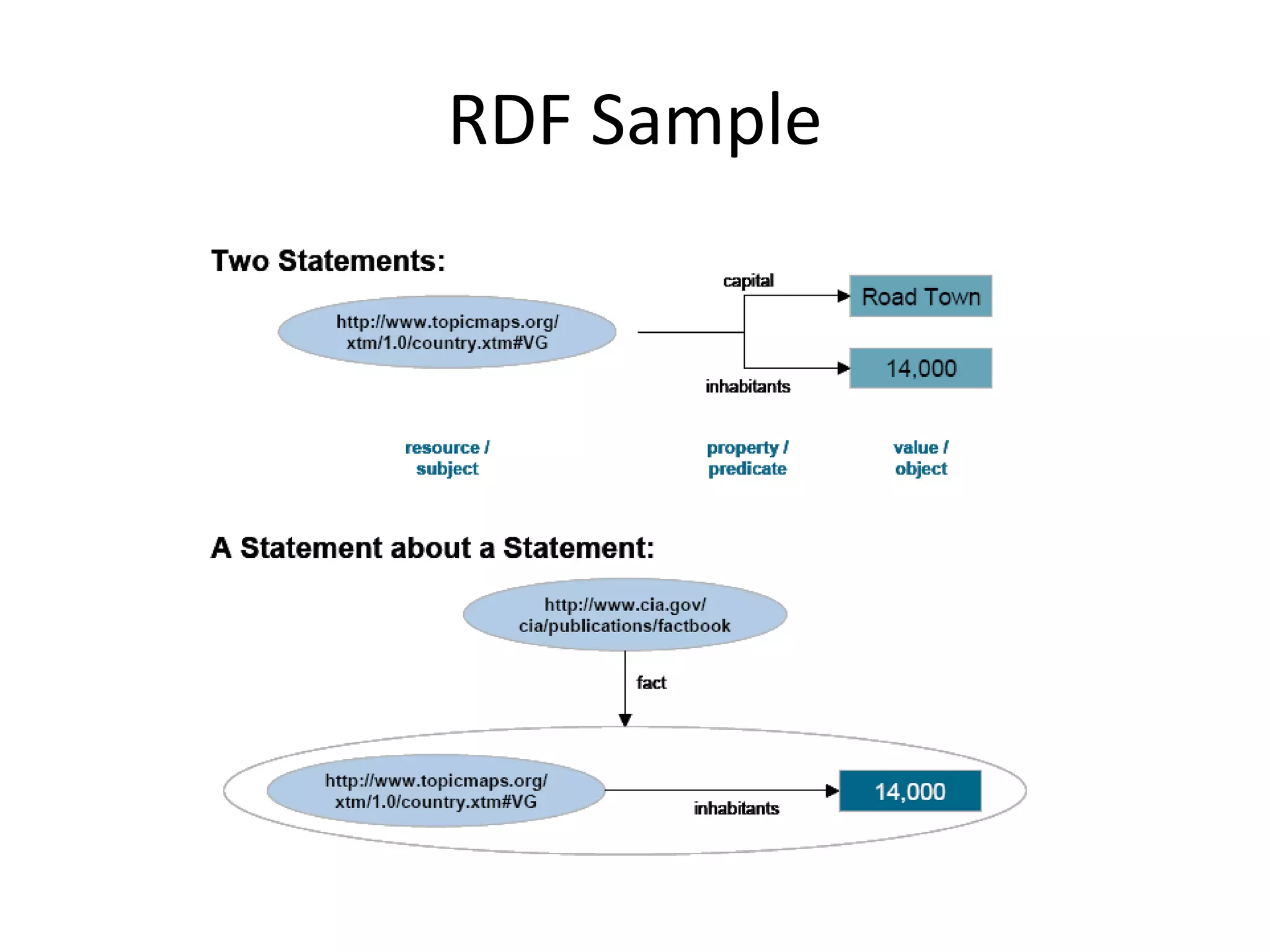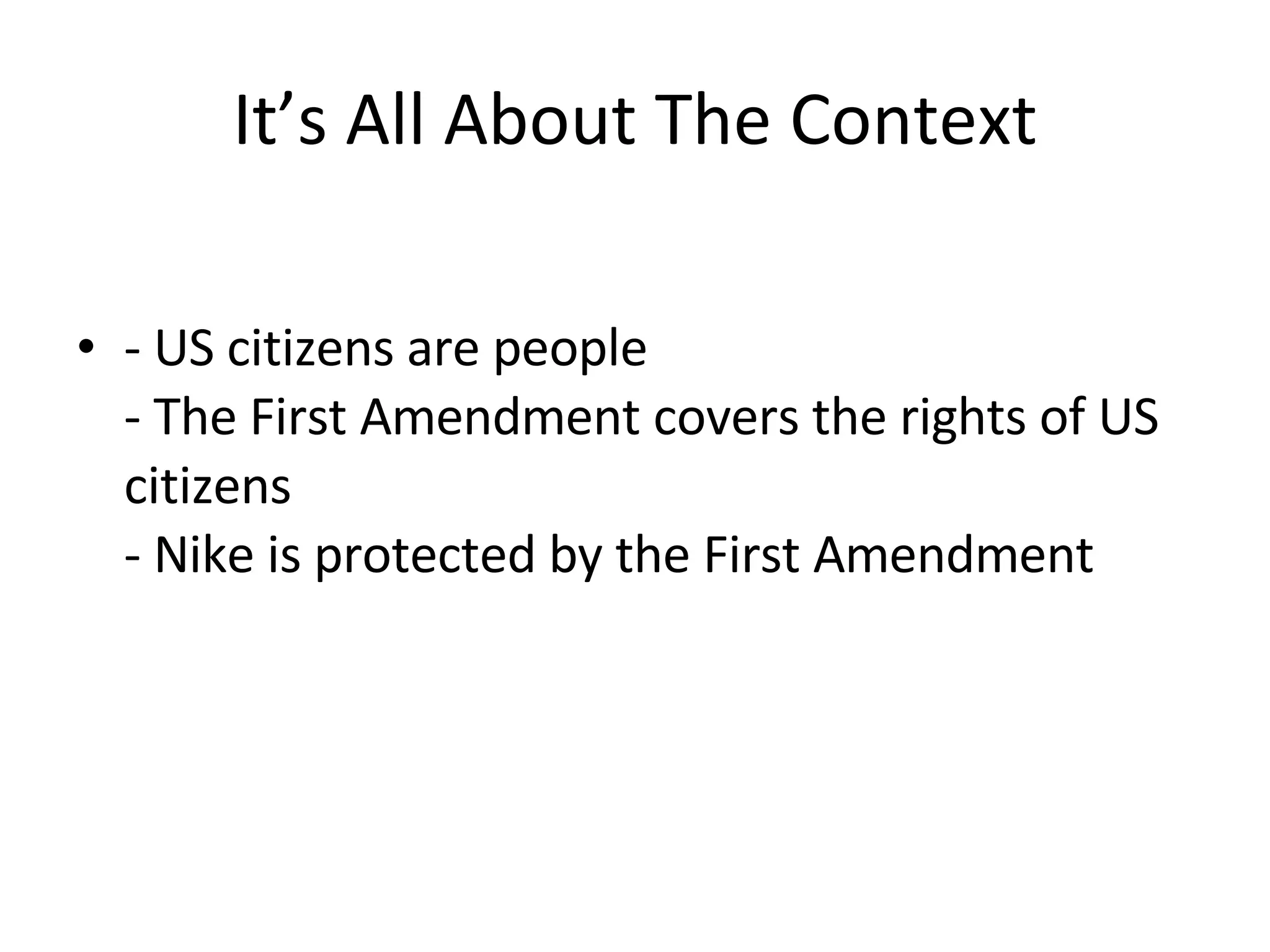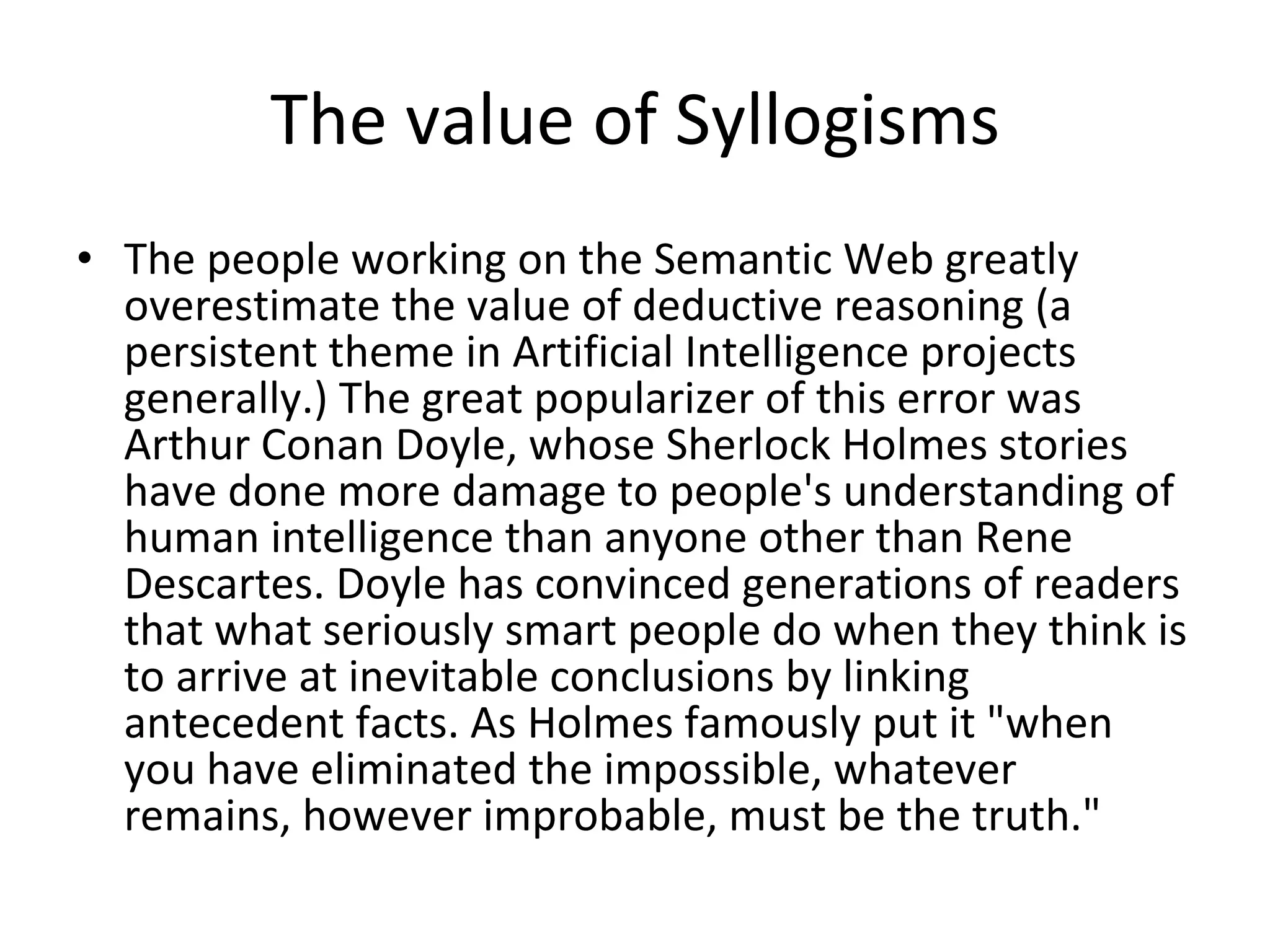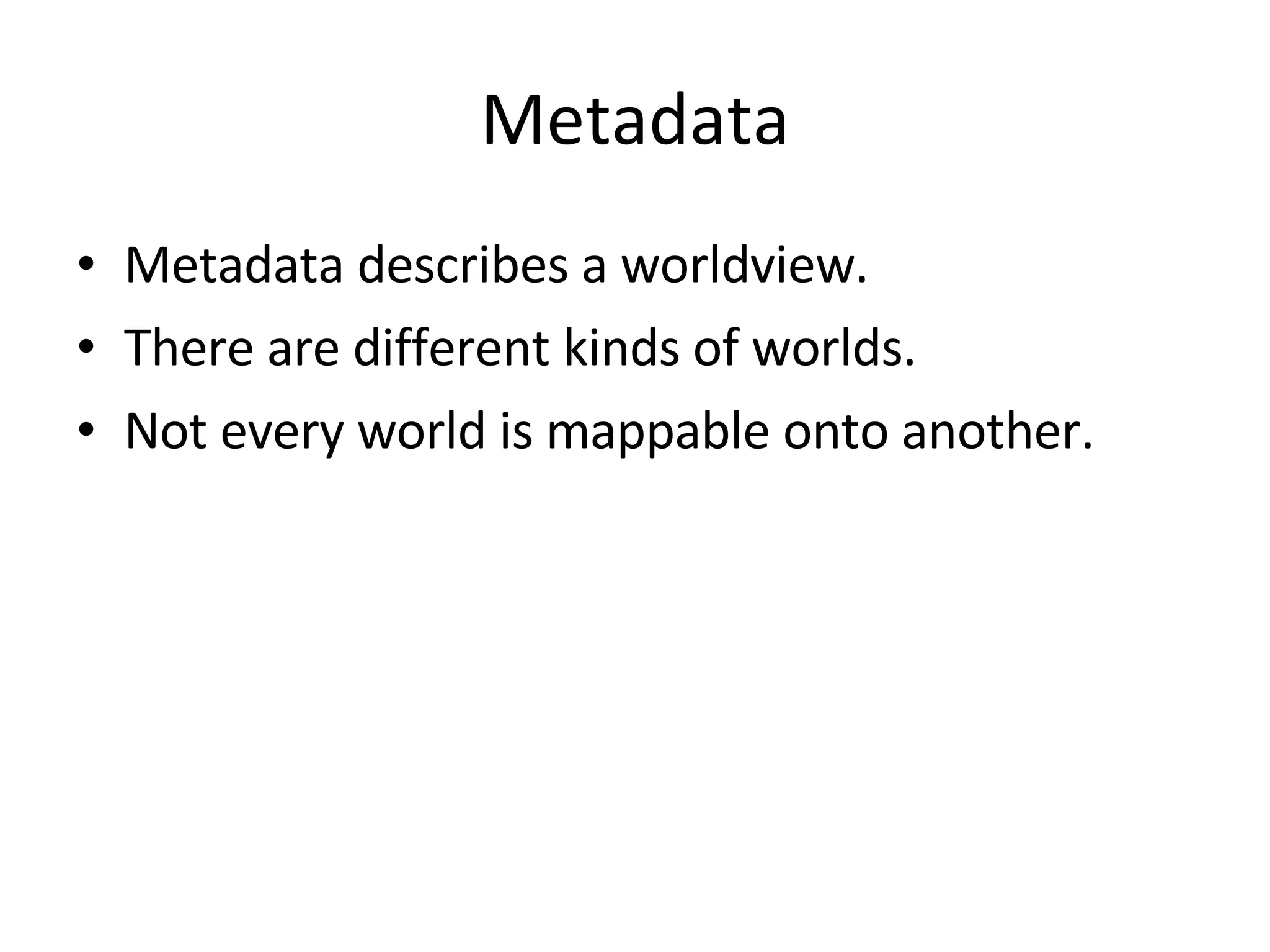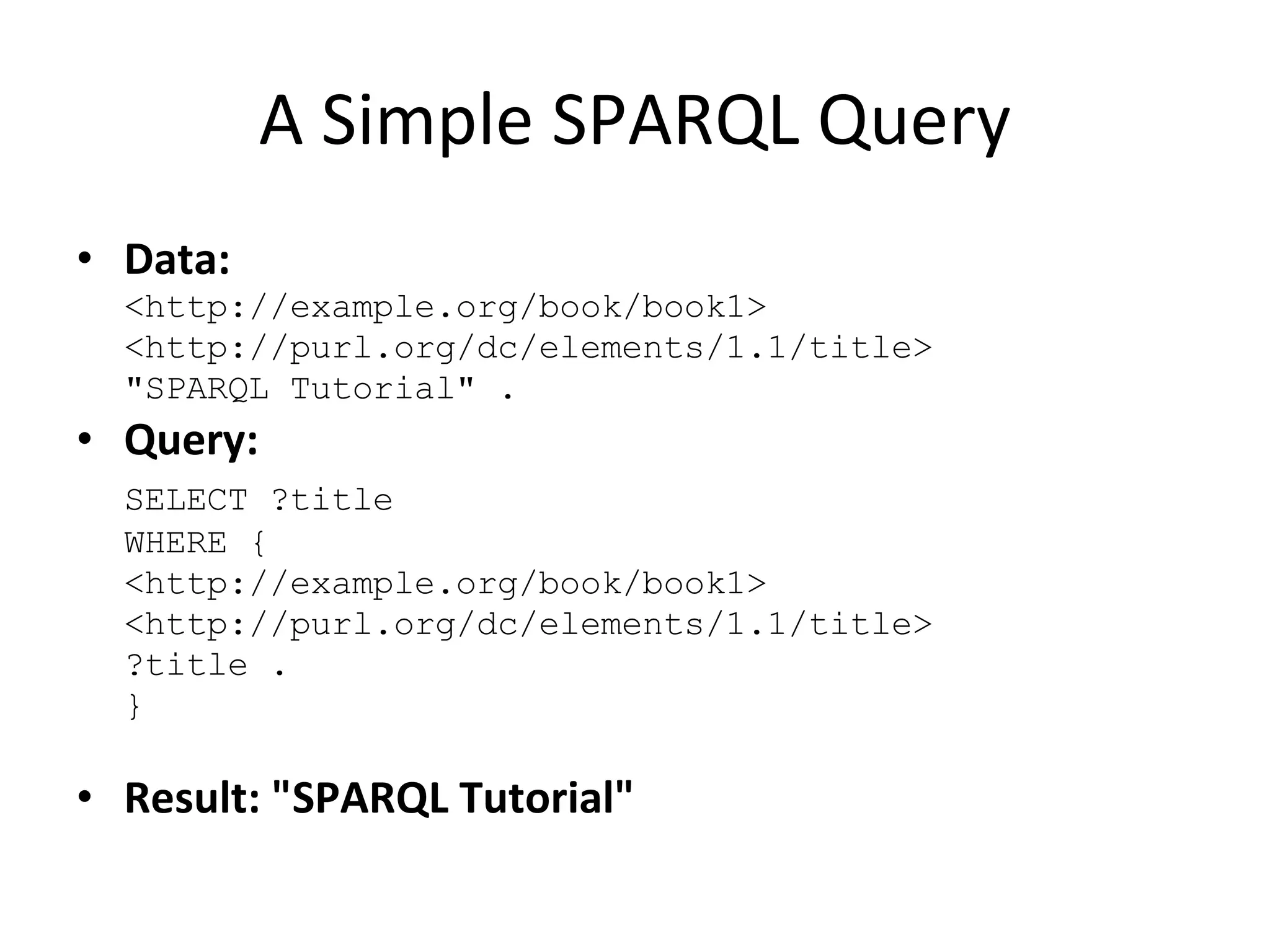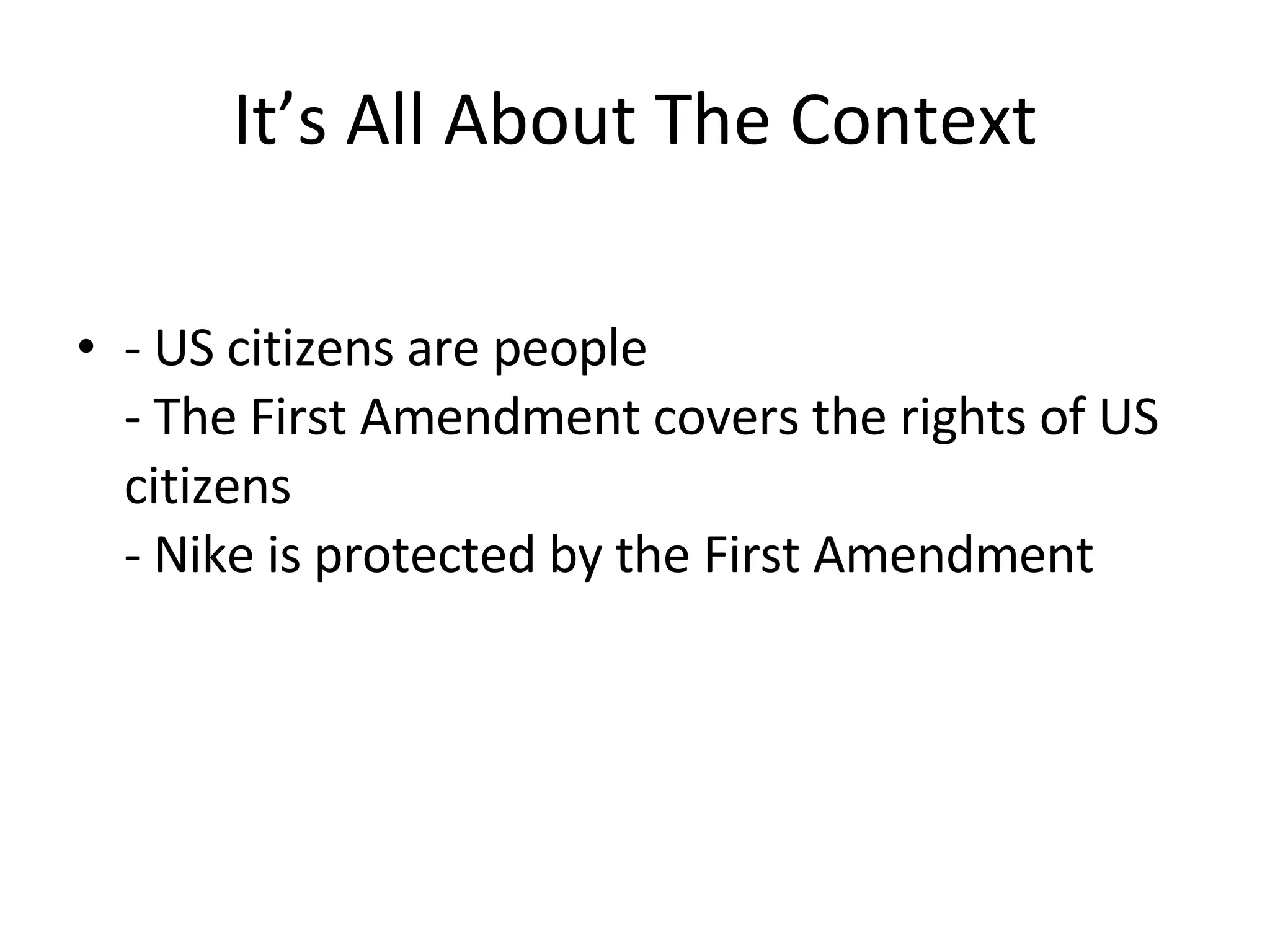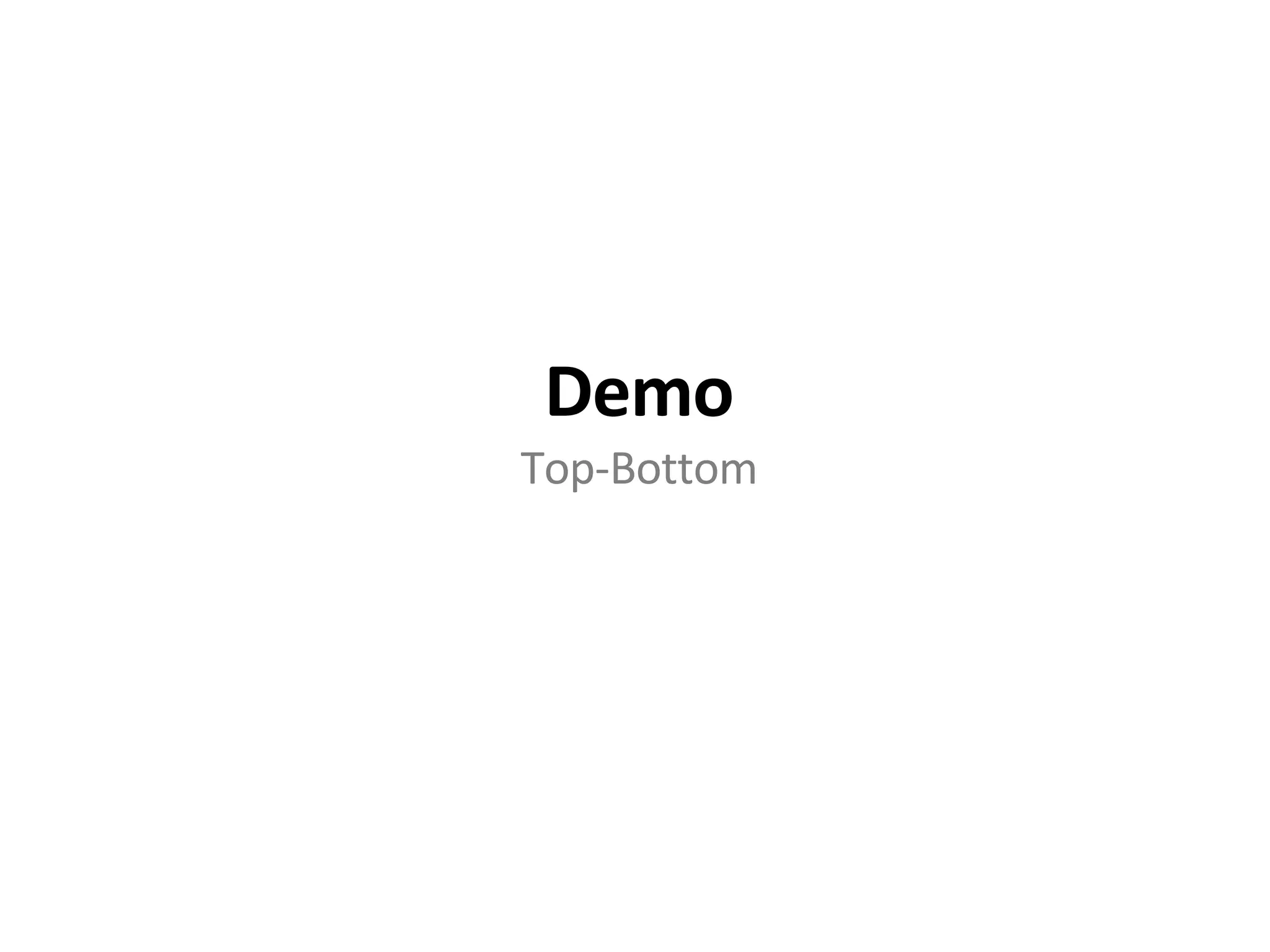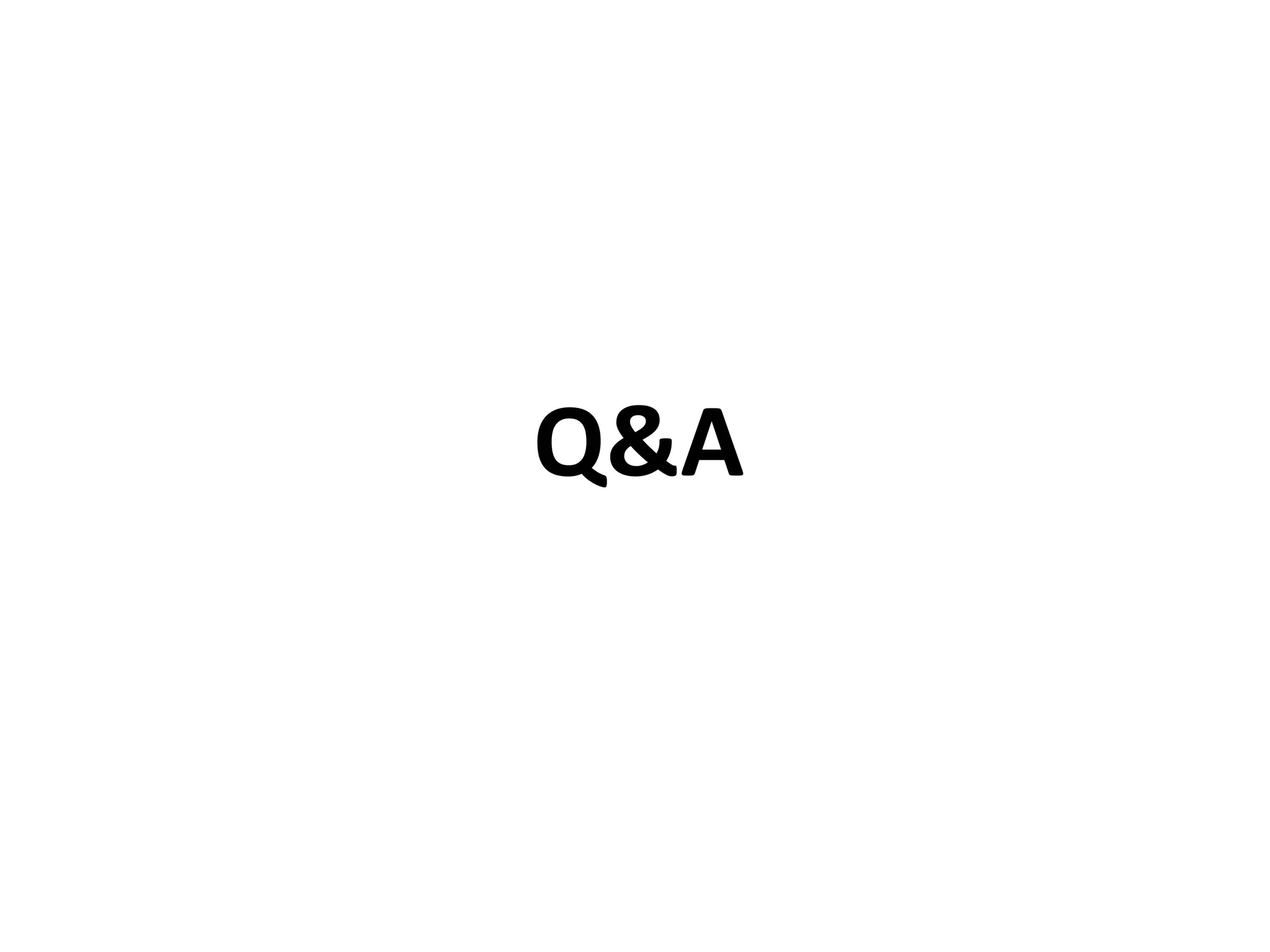The document discusses the vision, architecture, and technology of the Semantic Web. It defines key concepts like semantics, ontology, RDF, and provides an overview of the Semantic Web stack and architecture. Examples of semantic web applications and technologies like SPARQL queries are also presented to illustrate how semantic markup allows machines to understand web content.
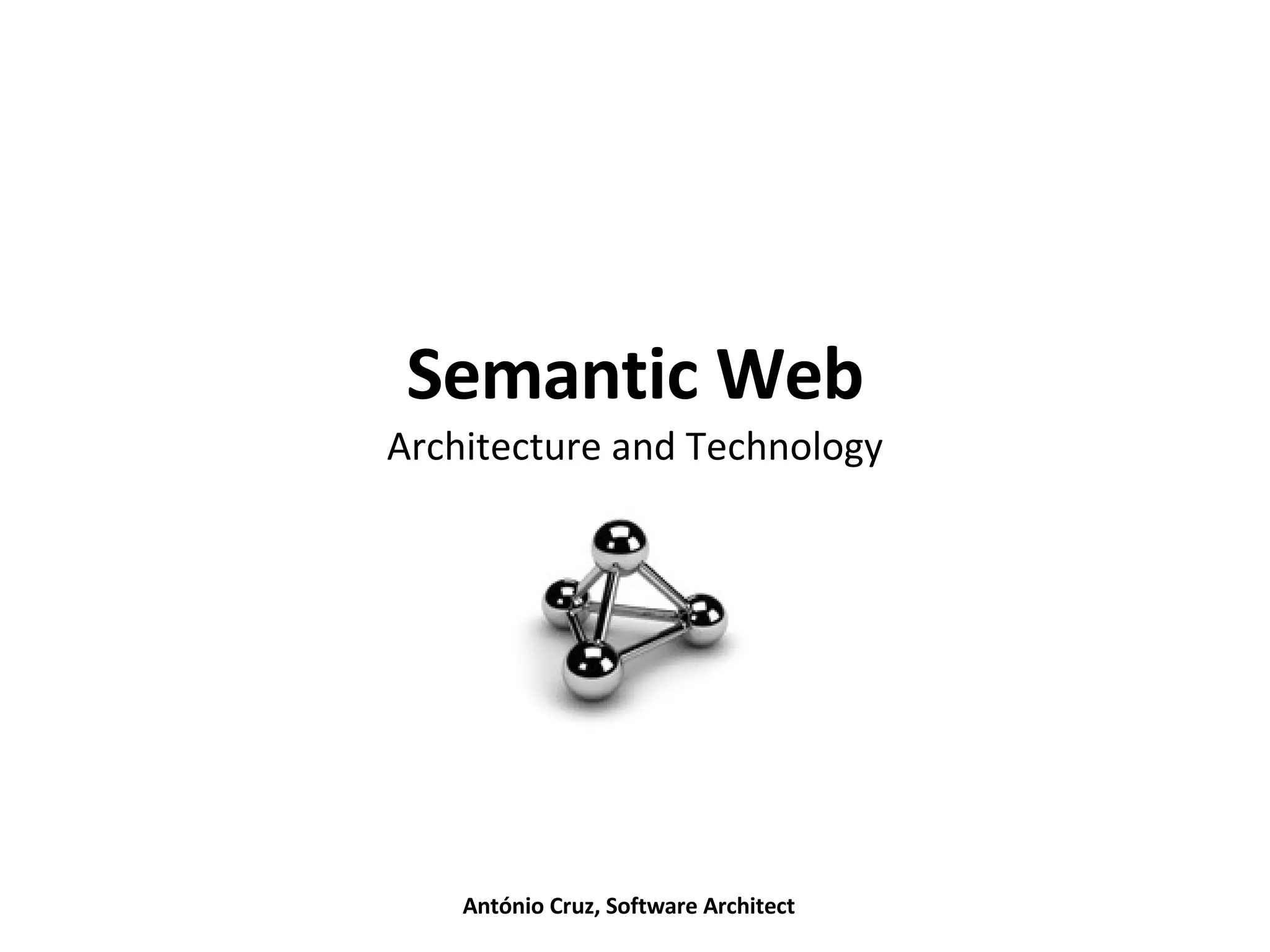
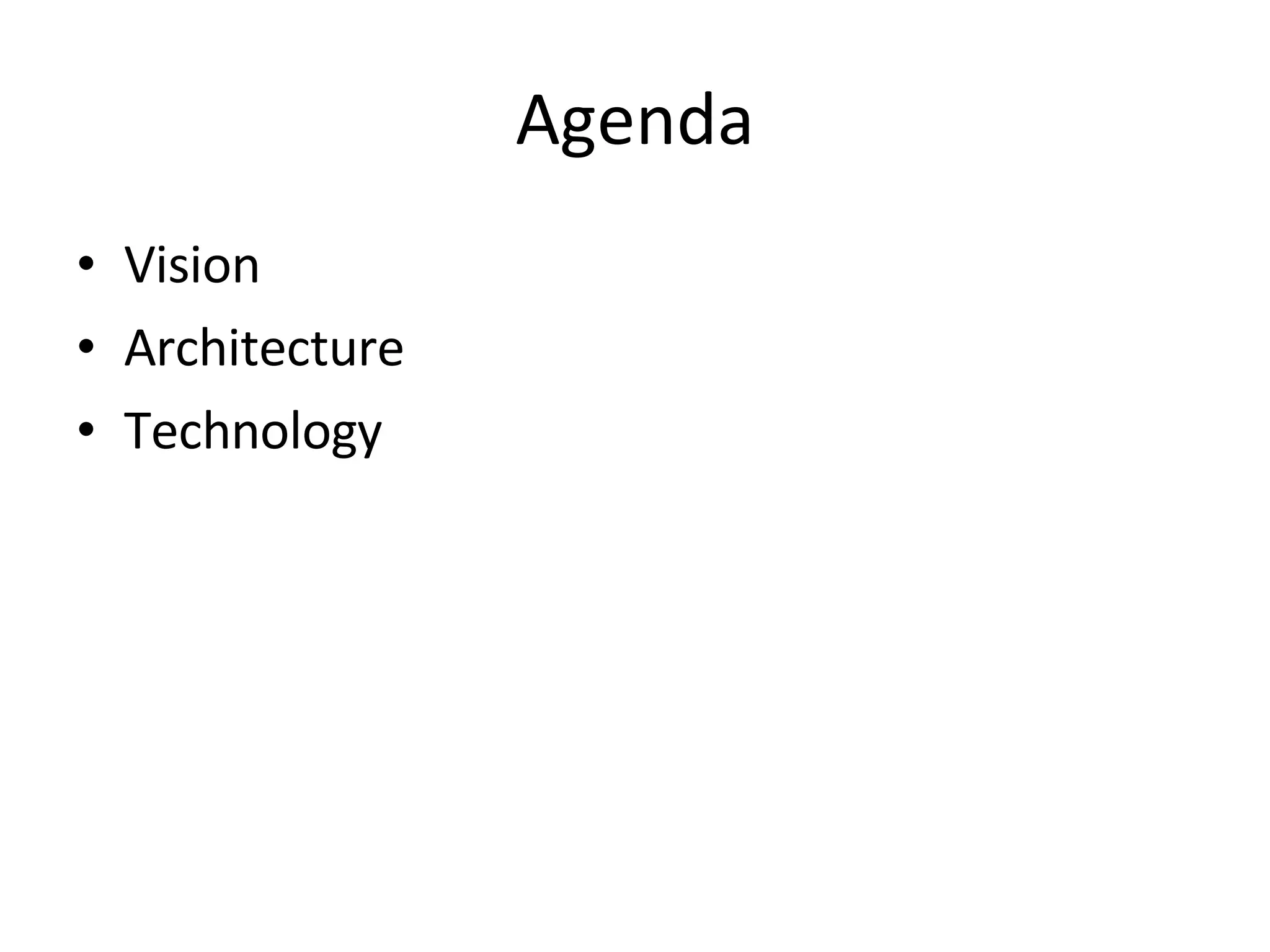
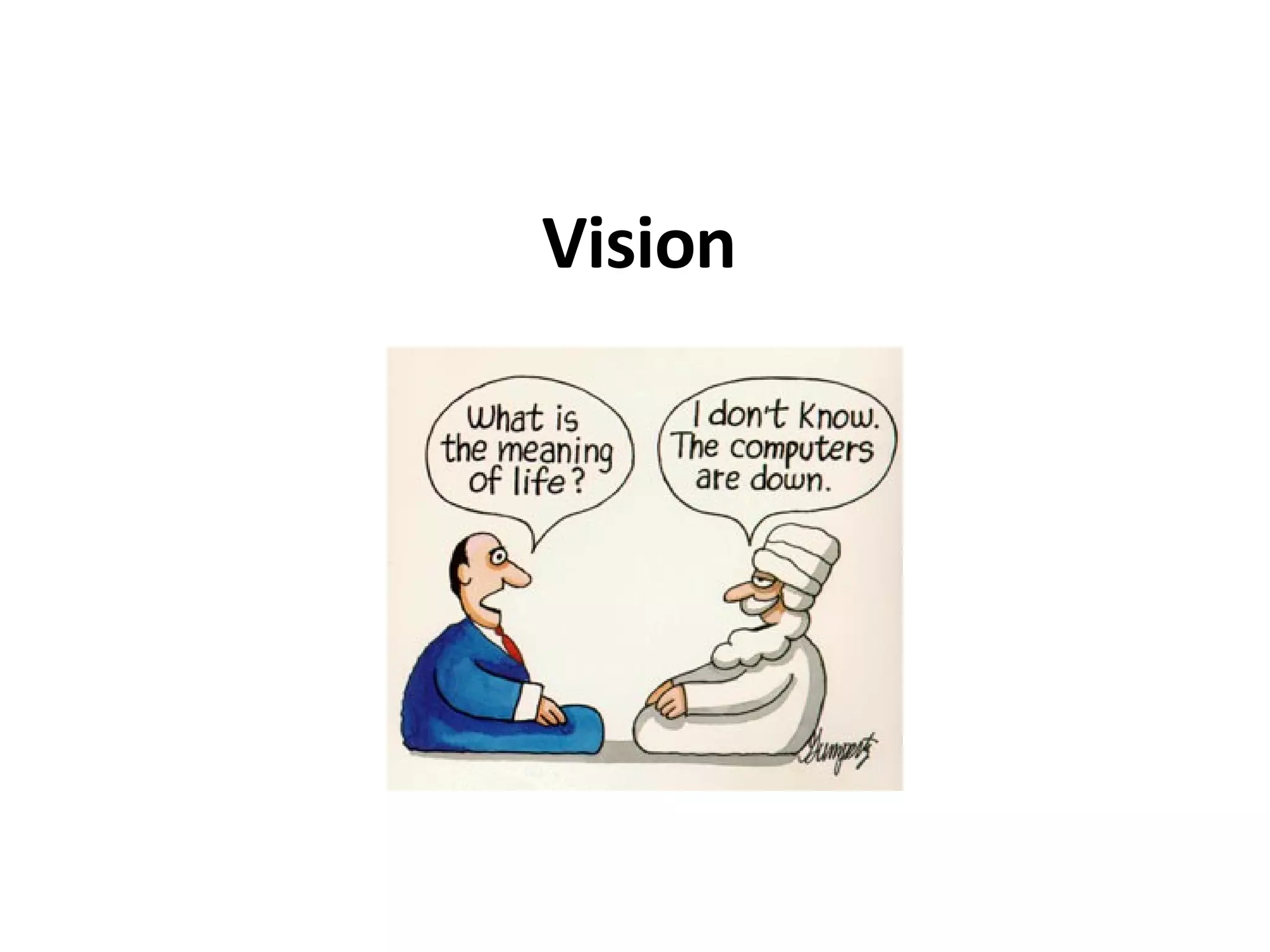
![Vision “ I have a dream for the Web [in which computers] become capable of analyzing all the data on the Web – the content, links, and transactions between people and computers. A Semantic Web , which should make this possible, has yet to emerge, but when it does, the day-to-day mechanisms of trade, bureaucracy and our daily lives will be handled by machines talking to machines. The intelligent agents people have touted for ages will finally materialize”. Tim Berners-Lee, 1999](https://image.slidesharecdn.com/semanticweb-124071059382-phpapp01/75/Semantic-Web-4-2048.jpg)
